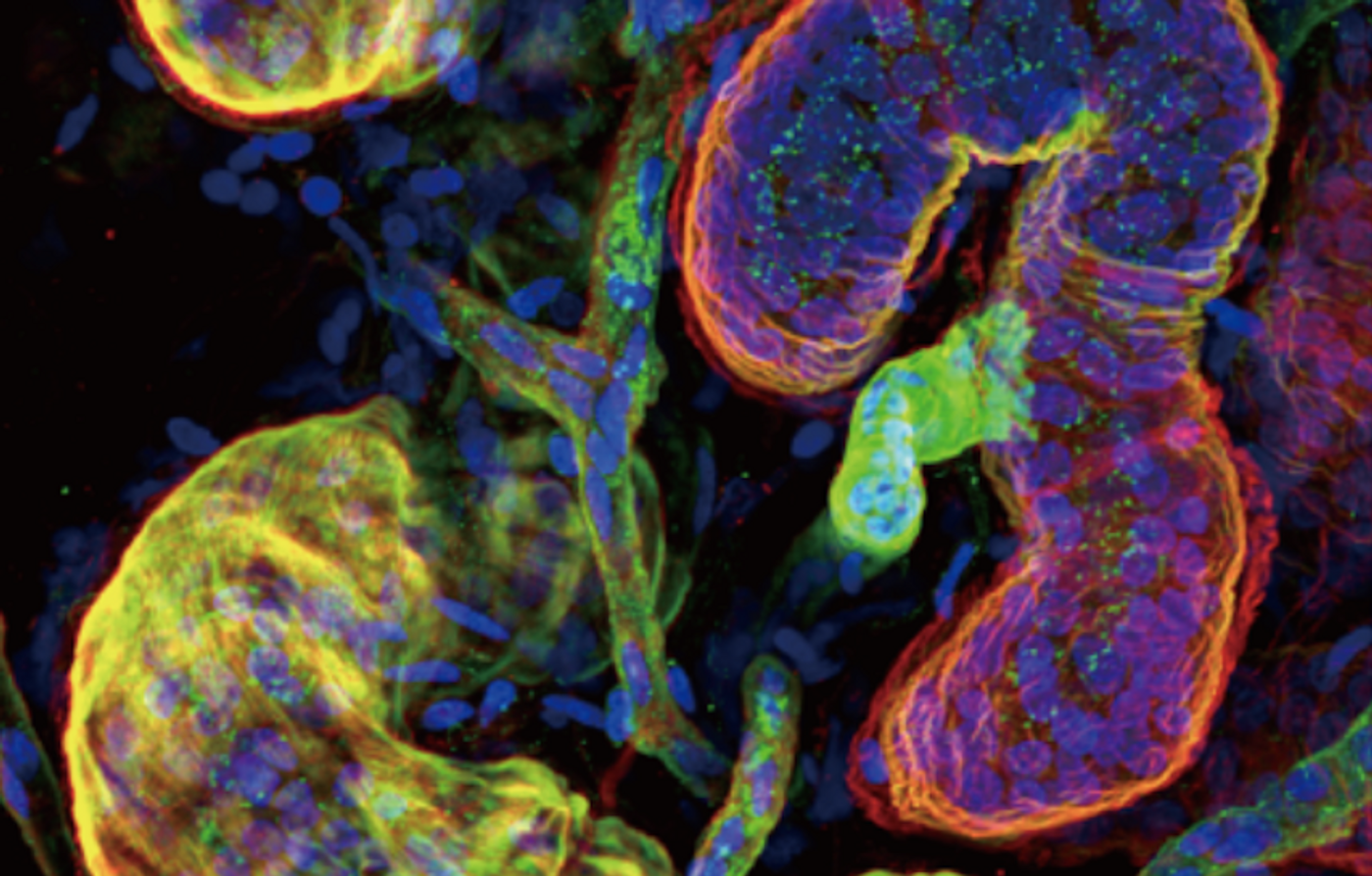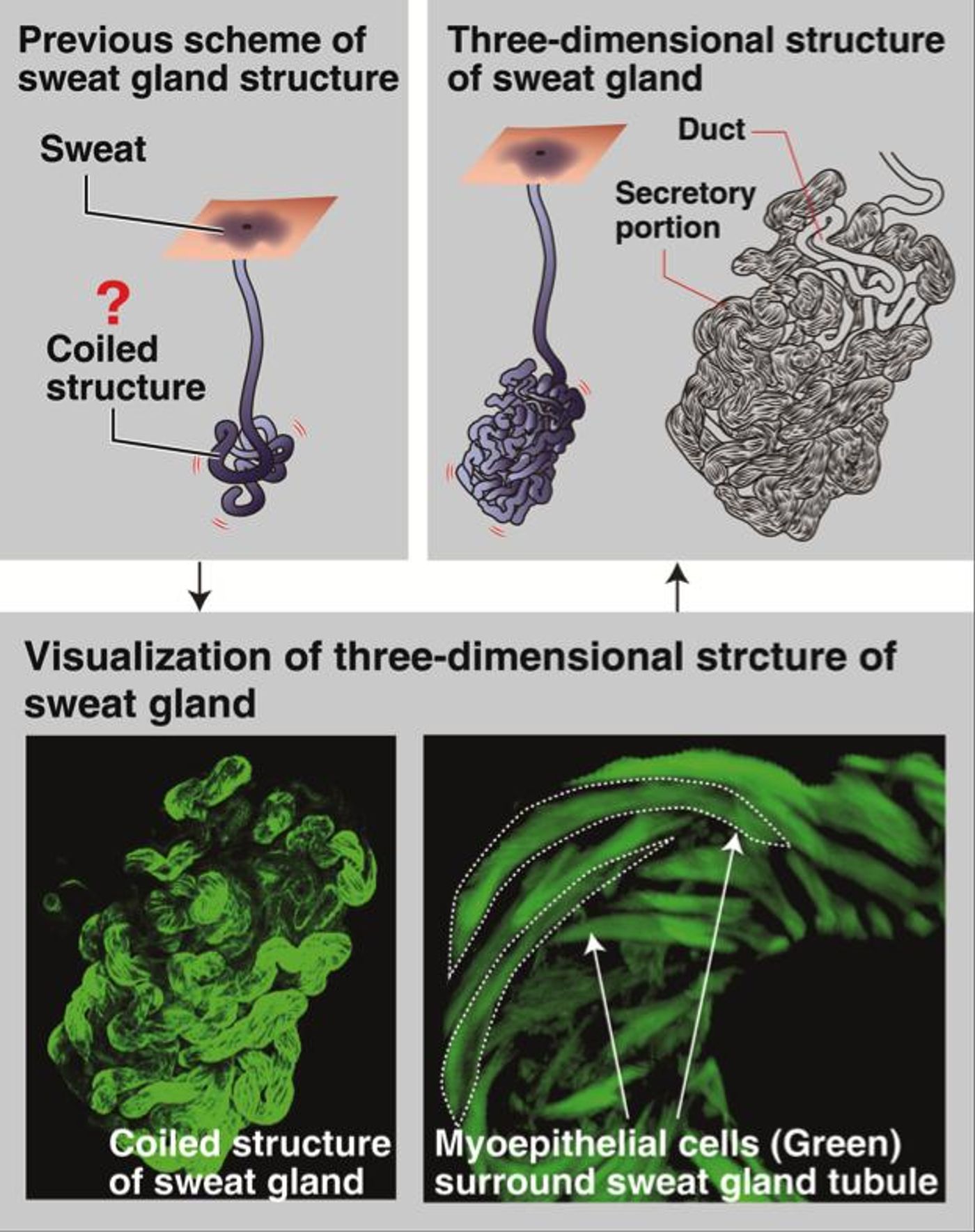Sweat Gland Structure Revealed in Unprecedented Detail
There is incredible complexity within the sweat gland, as such, it has been challenging to learn more about it in depth. It is known that human sweat glands contain a coiled secretory region that lies deep within the skin, while a tube directs sweat towards the skin surface through a pore. There have been technical hurdles to understanding more about these glands. However, new work changes that.
Researchers at Osaka University have made a breakthrough in our understanding of sweat glands. Utilizing a technique called whole-mount immunostaining, they have revealed the structure of sweat glands at the level of a single cell. That new data has shed light on the how the various components function. The scientists think that this new work could help develop treatments for disorders that impact perspiration.
Commonly, structures in cells are studied by obtaining a block of tissue and then slicing it into thin sections, which are then treated further with labels and dyes that allow researchers to identify specific features. While it is easier than ever to reconstruct a three-dimensional view of the tissue block and visualize the structures from the treated slices, there are limits to this methodology. Sometimes the complicated preparation of the tissue alters it and interferes with our understanding of the true features.
Reporting in PLOS One, the investigators have risen to meet these challenges. Whole-mount immunostaining was utilized, which highlights sweat glands after all of the surrounding connective tissue of the skin has been removed. As such, features could be seen intact and unaltered.
"Whole-mount immunostaining allows us to view the sweat gland structures seamlessly, without interruptions for sectioning, which is very important given that part of the gland has tubes that are entangled with each other in a very complicated way," Kiyotoshi Sekiguchi said. "We revealed the different cross-sectional shapes of these tubes and the cells that they're made of."
The team's findings reveal the importance of myoepithelial cells, which work together to contract the secretory region of the gland and push sweat to the surface. This work also indicates that the sweat gland is interacting with blood vessels and nerves. These results may be a new clue as to how sweating becomes dysfunctional.
"This knowledge about sweat gland structure and function could have many clinical applications, and even lead to strategies for treating heatstroke," Ryuichiro Kurata said. "Because of the high-resolution findings that our approach provides, we can even determine the density of nerve fibers in sweat glands, helping to diagnose specific sweating-related disorders and to select appropriate treatments."
Sources: AAAS/Eurekalert! via Osaka University, PLOS One











